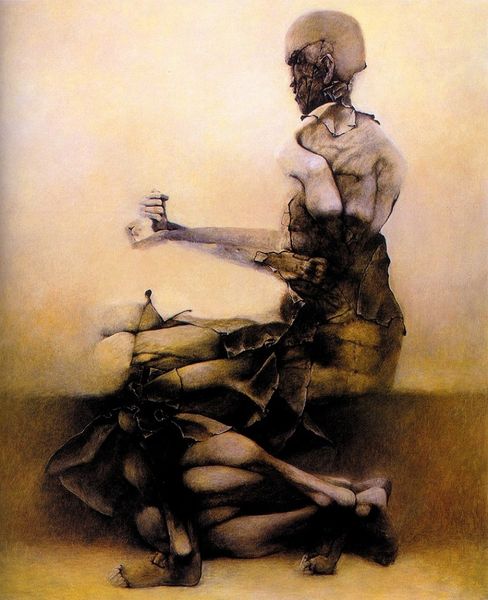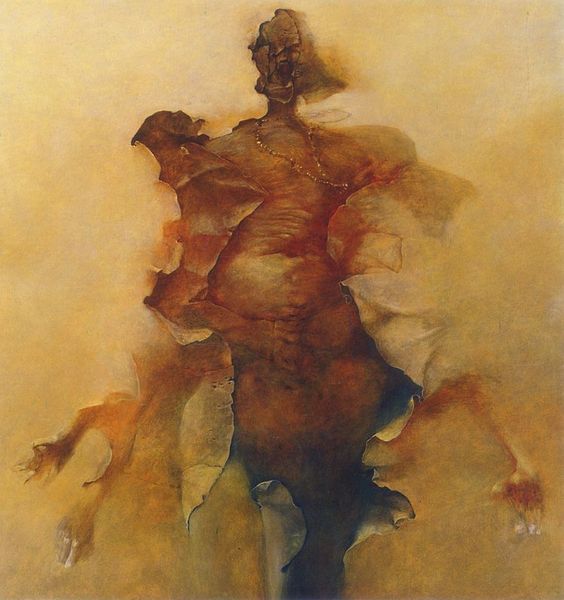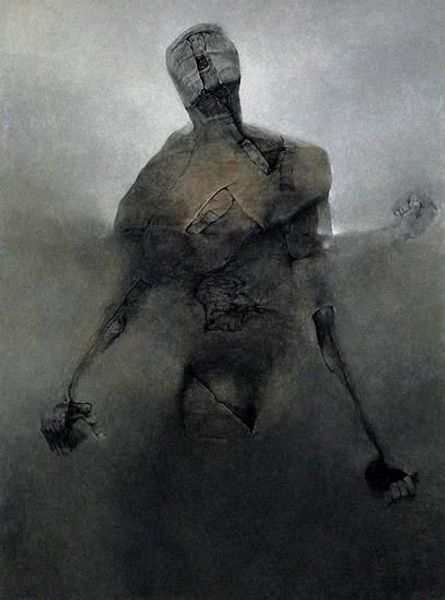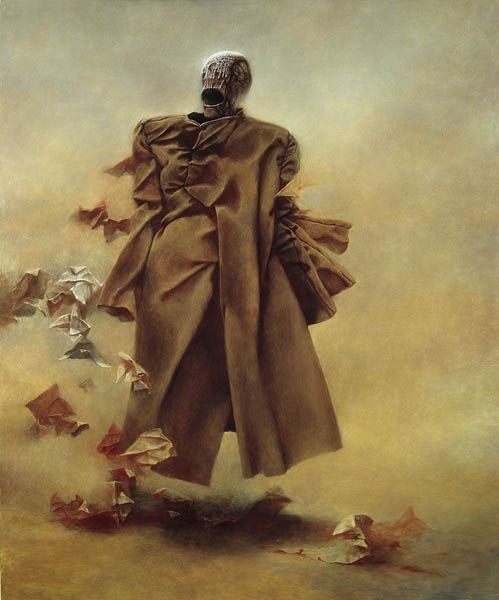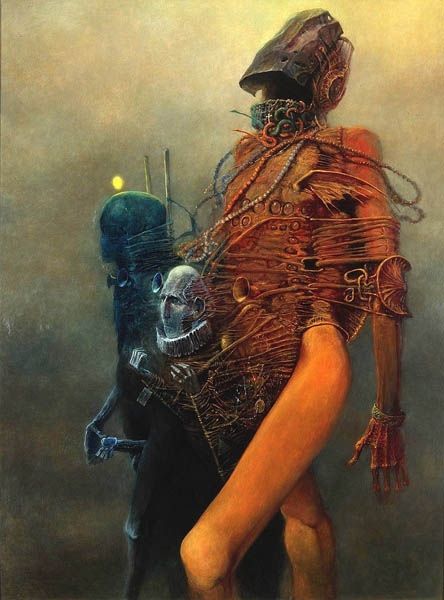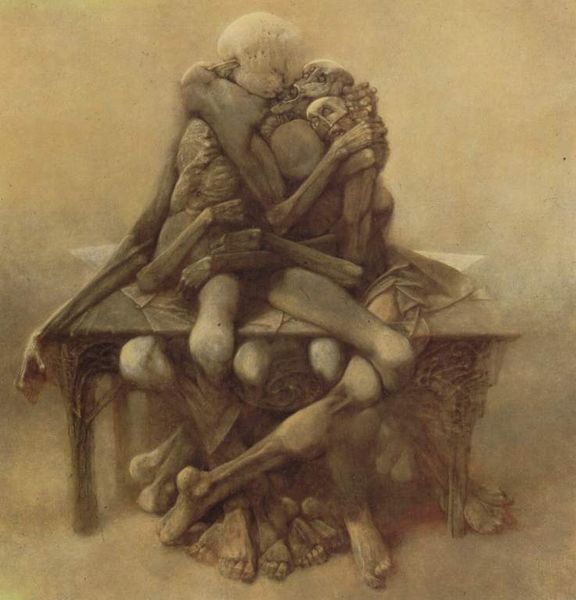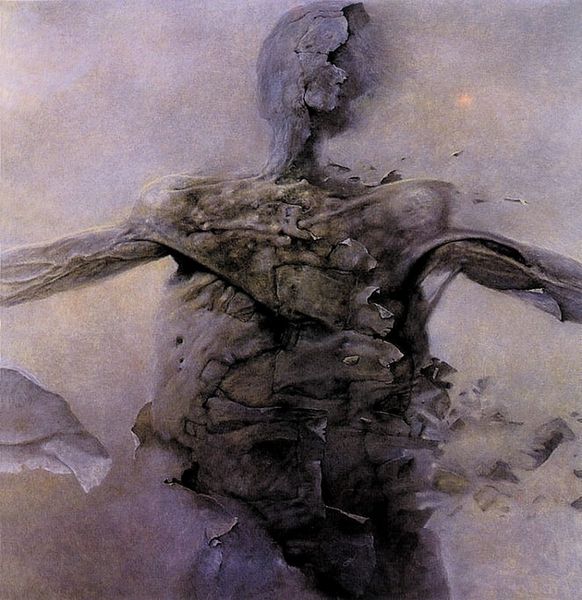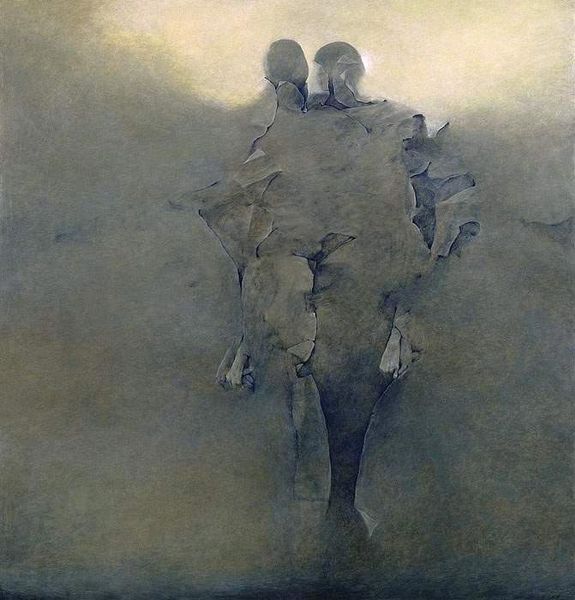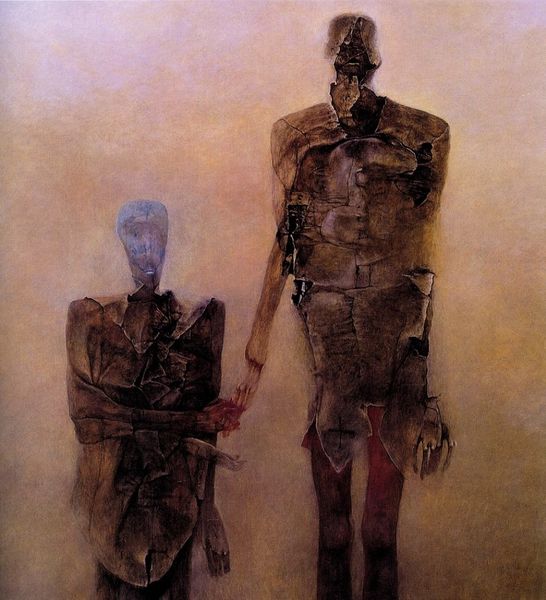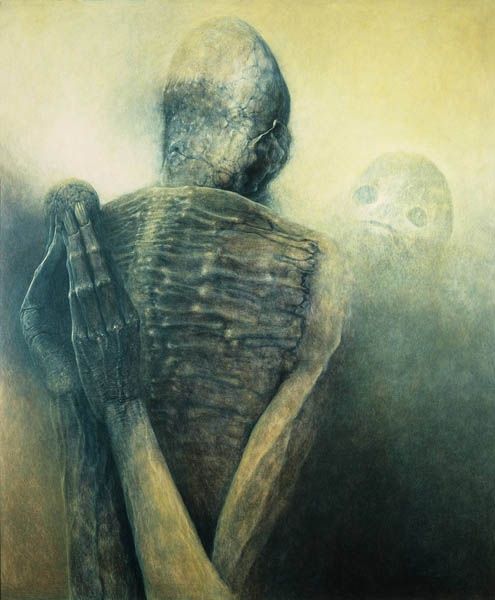
oil-paint
#
allegories
#
acrylic
#
allegory
#
fantasy art
#
oil-paint
#
landscape
#
fantasy-art
#
figuration
#
neo expressionist
#
neo-expressionism
Copyright: © The Historical Museum in Sanok (Poland) is the exclusive owner of copyrights of Zdzisław Beksiński's works.
Curator: This is an Untitled work by Zdzislaw Beksinski, who’s known for his dystopian surrealist imagery. It is executed in oil on canvas. Editor: My immediate reaction is… unease. It’s quite unsettling. The colour palette is muted, almost monochromatic, giving it a somber, post-apocalyptic feel. Is that… a figure made of bone fragments? Curator: Precisely. Beksinski often worked with themes of decay and the grotesque. Notice how the implied texture of bone, stone, and perhaps aged flesh contribute to that. And see how the surface appears worked and reworked. Editor: So, you're pointing towards a layering effect through his brushstrokes. Is this linked to neo-expressionism and its reaction to more manufactured types of art? Curator: Very insightful. Neo-expressionism embraced raw emotion, distortion, and the artist’s hand. Consider the socio-political climate in Poland during Beksinski's time – a period marked by censorship, economic hardship, and the looming shadow of Soviet influence. This sense of constraint seeps into his work. It feels incredibly personal, unfiltered. Editor: So, we might see these fragmented figures as metaphors for a broken society, pieced together but inherently unstable? And this imagery, circulated, finding purchase and affecting different groups of people over time? Curator: Precisely. Museums become important places where different understandings intersect, shift and re-imagine themselves, or resist. He used readily available materials – oil paint, canvas – transforming them into a bleak vision. It's also difficult to pinpoint a specific era for the painting, which only adds to the alienating effect. The means were modest, but the impact is quite substantial. Editor: Looking closer, the skill with which he renders light on those bone-like surfaces is incredible, actually drawing attention and accentuating this landscape as much as the figures do. There’s a luminosity there that transcends the gloom. I can’t decide if the lone sphere at the bottom is another component of bone and stone, or something different. Curator: Perhaps an omen. An echo of Earth as seen from the Heavens, even. Considering the materials themselves is really interesting, the history and social aspects inherent in art consumption. Editor: Absolutely. Beksinski takes relatively straightforward materials and completely subverts our expectations. A compelling piece that encourages deeper thought on history, society, and materiality. Curator: I agree. Its lasting impact is undoubtedly secured through that ability.
Comments
No comments
Be the first to comment and join the conversation on the ultimate creative platform.
